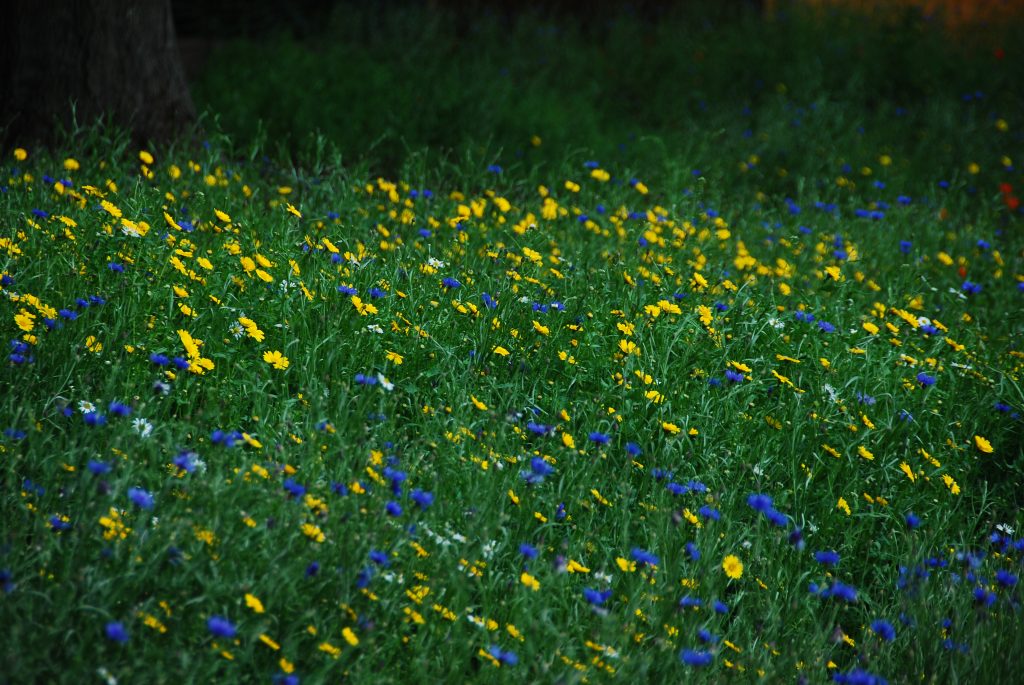A recent report published by PLANTLIFE (Still & Byfield, 2007: available here.) begins, “Arable flora is the most threatened group of plants in Britain today”. Arable weeds which used to be common in crop fields all over Britain have become much rarer. The same PLANTLIFE report states that 54 arable plant species are rare or threatened, and seven are extinct in British arable fields.
The declines in arable plant species have been caused by the big changes in arable farming practices that have taken place over the last 60 years. These include seed cleaning (to remove ‘weed’ seeds from the crop being sown), use of fertilizers and herbicides, change from spring to autumn cultivation, and reduced diversity of crop types within rotations.
Yet farmland ‘weeds’ are a food resource for a huge number of farmland insects, spiders and other invertebrates that in turn are eaten by small animals and by farmland birds such as yellowhammer skylark and lapwing. If the ‘weeds’ decline, so do the insects that depend on them, and then the birds and mammals which eat the insects. The RSPB State of the UK’s Birds 2012 report states that between 1970 and 2010, British populations of once common farmland birds have declined markedly: turtle dove down by 93%, grey partridge and tree sparrow by 91%, lesser redpoll by 86%, starling by 80%, house sparrow by 64%, skylark by 58%, lapwing by 56%, linnet and yellowhammer by 55%.
Arable plant diversity varies across the UK. Local visitors will be pleased to know that in Scotland, our own county, Midlothian, has the greatest diversity of arable flora, with a score of 177 (Still & Byfield, 2007). Other east coast counties such as Moray, Fife and East Lothian also have relatively high scores. However the greatest arable plant diversity is found in southern England, with the ‘top five’ areas being Berkshire and North Essex (both with a diversity score of 378), Surrey (367), North Hampshire (360) and South Hampshire (357). In Wales the most diverse areas are Denbighshire and Monmouthshire.
The plot in front of you has been sown with a wide variety of farmland wild flowers. As well as the ones mentioned on the panel, they include corn spurrey Spergula arvensis, large-flowered hemp-nettle Galeopsis speciosa, shepherd’s purse Capsella bursa-pastoris, field forget-me-not Myosotis arvensis, field pansy Viola arvensis, henbit Lamium amplexicaule, greater celandine Chelidonium majus and sun spurge Euphorbia helioscopia, among others. A useful illustrated identification guide to threatened arable wild flowers has been produced by PLANTLIFE and can be found here.
